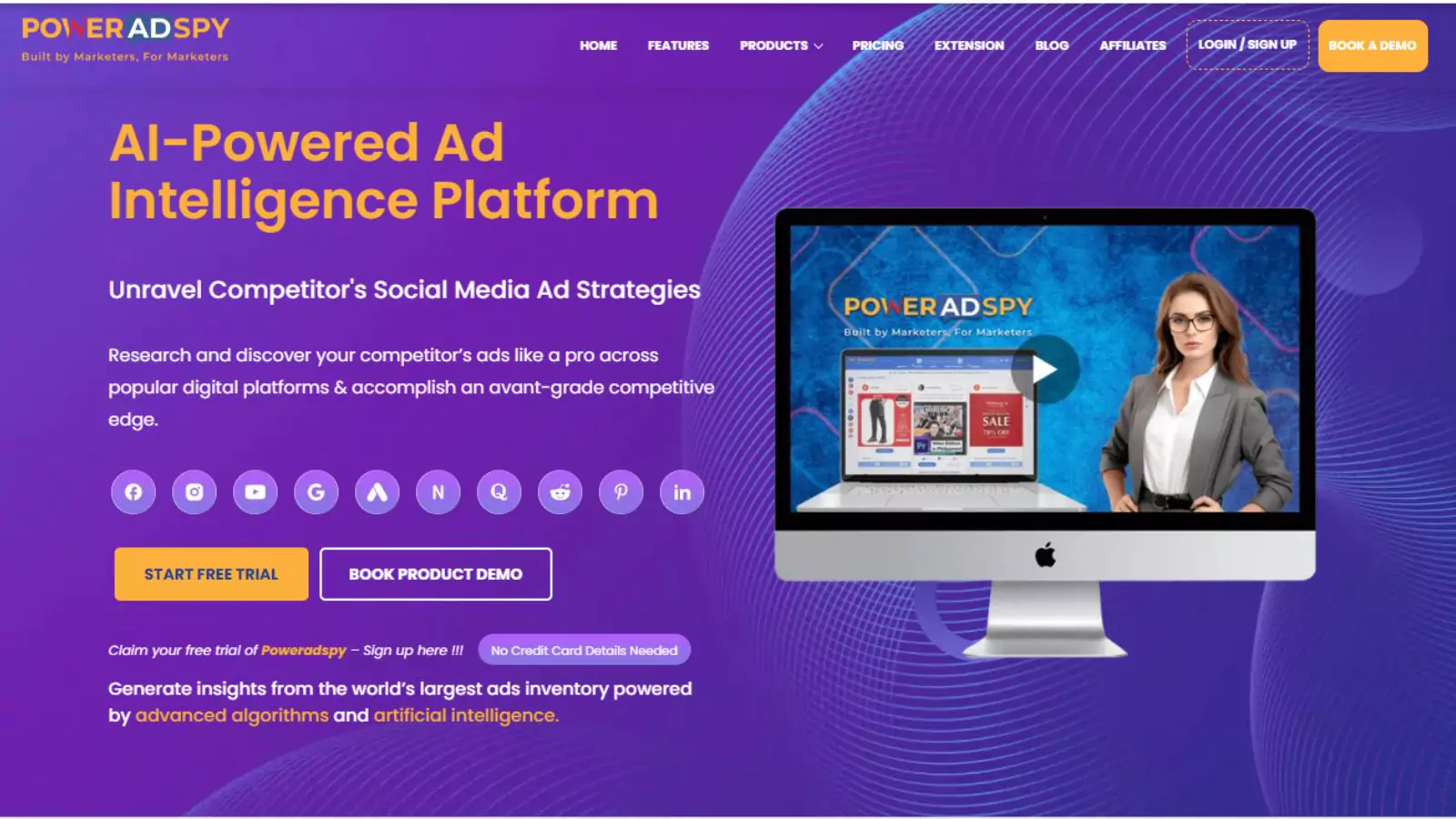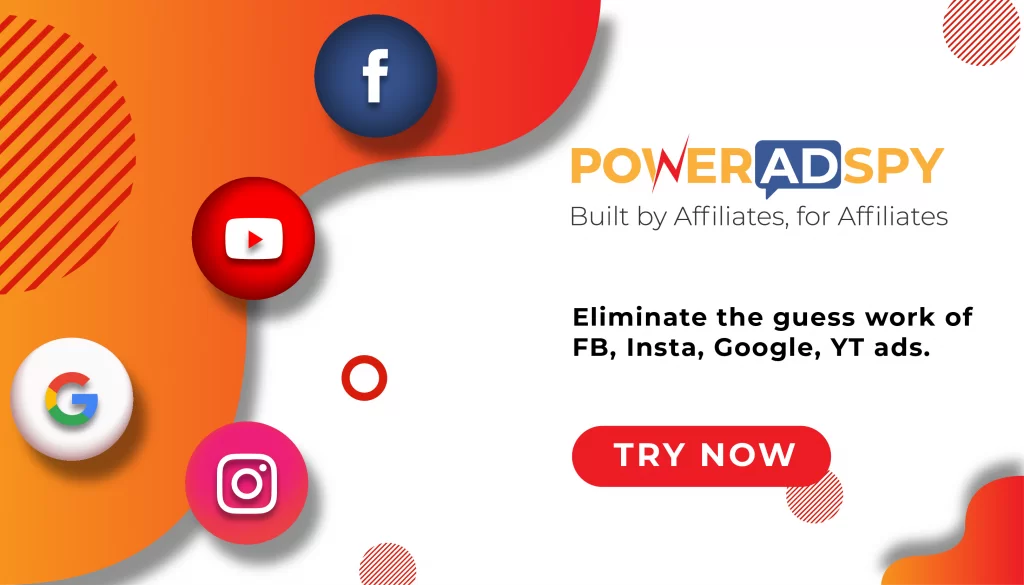All You Need To Know About Gaming Ads
Gaming ads have become one of the most dynamic and influential avenues for brands to connect with consumers. What was once limited to static banner ads has now exploded into a universe of interactive, immersive, and engaging content woven seamlessly into gaming experiences. From mobile games to console and PC platforms, the gaming world is a goldmine of opportunities for advertisers to target a passionate, tech-savvy, diverse audience.
Think of the possibilities: brands can place their products in environments where players spend countless hours, from a soda billboard on a virtual racetrack to branded skins and accessories that enhance gameplay.
The magic of gaming advertisements lies in their ability to blend into the gaming environment without disrupting the player’s immersion- making the ads feel like part of the story rather than a distraction. This unique, non-intrusive approach allows brands to build deeper connections and trust with their audience.
What Is In-Game Advertising?
Ingame advertising refers to purchasing ad placements within computer, video, or mobile games. Game developers leverage this strategy to increase revenue by selling ad space within the game environment or the app.
While ads in games were once seen as somewhat disruptive, they’ve significantly evolved. Today, they come in different formats that are often less intrusive, such as intrinsic in-game ads that blend naturally with the gameplay experience.
Who Is The Target Audience For Gaming Ads?
As marketers, we often envision the typical gamer as a teenage boy glued to his screen in a dark room. But that outdated stereotype doesn’t reflect today’s reality.
While ad gaming was once male-dominated, the landscape has shifted, particularly in mobile gaming. According to a survey, around 60% of mobile-only gamers are female, compared to 50% male, according to GWI. It highlights an essential opportunity for marketers to tap into a diverse audience.
Gaming, specifically on mobile platforms, attracts users of all ages and backgrounds. Millennials (ages 23-36) lead the charge as the most active mobile gamers and casual video gamers follow suit. Among mobile-only gamers, Gen X is the second-largest segment (ages 37-55). Gen Z (ages 16-22) and Gen X actively engaged in video games and gaming ads.
These insights break down common misconceptions about gaming demographics. The truth is that in-game advertising presents an opportunity to reach a vast, diverse audience across various age groups in an immersive and enjoyable environment—allowing brands to engage consumers without disrupting their experience. It is a goldmine of potential to deliver targeted ads in a setting that captivates users’ attention for marketers.
What Are The Types Of Gaming Advertisements?
In-game advertising can be divided into two main types: static and dynamic ads, with various ad formats falling under each category.
Static In-Game Advertising
You can integrate static ads into the game during the app’s development phase. As their name suggests, these gaming ads remain unchanged throughout the game’s lifecycle. Much like product placements in movies or music videos, static ads typically appear on billboards or signs within the game. Due to their fixed nature, static ads have not gained as much popularity as their dynamic counterparts, which we’ll explore later.
However, newer iterations allow for greater customization, so static in game ads are becoming more popular. By 2028, industry experts project that static ads will generate approximately $6,365.3 million in revenue.
Dynamic In-Game Advertising
Unlike static ads, dynamic ads consist of banners displayed in a game that you can update in real-time. These gaming ads offer advertisers significant flexibility and scalability, allowing them to geo-target opted-in users effectively.
Advertisers choose dynamic ads for their format variations. Below, we will highlight the six most common types of dynamic ad formats.
Interstitial Ads
Interstitial ads are rich, interactive advertisements that take up the entire screen. These ads leverage natural pauses in gameplay, such as breaks between levels. Because they don’t disrupt ads gaming experience, interstitial ads typically achieve high impressions and conversion rates.
The creativity and timing of an interstitial ad are crucial to its effectiveness.
Native Banners
Native banners resemble web banner ads but blend seamlessly into the background for a relaxed gaming ad experience. Unlike display banners, native ads are embedded and appear as part of the content in gaming ads.
By 2025, marketers expect global spending on native ads to reach $400 billion. Ongoing technical innovations to drive this growth, like native ads that integrate seamlessly with the surrounding content
Contextual Ads
Contextual ads are delivered based on the user’s current state when the ad is shown. Advertisers provide specific topics and keywords to their digital media sources, which use algorithms to match ads with relevant content, keywords, and images.
The popularity of contextual ads is increasing, especially in light of new privacy regulations that limit the information advertisers can collect. For more insights on leveraging contextual ads, check out our blog post: Contextual Advertising’s Comeback.
Rewarded Video Ads
As the name implies, rewarded video ads incentivize users to watch full-screen ads. After viewing a few-second videos, users receive rewards such as in-game currency, extra lives, or access to additional levels. Many users prefer this format to in-app purchases, and 62% of developers have reported increased user retention following the introduction of rewarded video gaming ads.
Ready to dive into rewarded video ads? Our article Understanding Rewarded Video Ads provides ten best practices for effectively utilizing this ad format.
Playable Ads
Playable ads are interactive video advertisements that allow users to try a short preview of a gaming app before deciding to download it. These condensed versions showcase the app’s essential features, and give opportunities to “try before they buy.” By providing a sneak peek of the app’s functionality, playable ads help reduce uninstall rates and enhance retention.
Advergaming
Technically, advergaming encompasses more than just a single dynamic ad; it involves creating a complete game designed to promote a brand or product. In gaming, advertisements are embedded throughout the game, all directing attention to the singular brand that developed it.
For example, a racing game might feature a brand’s latest model as the vehicle of choice. To learn more about advergaming, check out our article: Advergaming: Why Your Brand Needs a Mobile Game.
What Are Gaming Ads Strategies?
By 2028, the global in-game advertising market will probably reach a revenue of $13,990 million. Here are some strategic tips for game developers and app marketers looking to capture users through gaming ads.
Understand Your Gaming Audience
According to Statista, half of the population will be mobile gamers by 2025, indicating that gaming has become a mainstream activity. Interestingly, 55% of females in the U.S. play mobile games, compared to 45% of males, debunking the stereotype that men dominate this space.
Moreover, mobile gaming isn’t just popular among the younger crowd; 60% of Gen X and 42% of baby boomers also engage with mobile games, according to data from NewZoo. With these insights in mind, take the time to thoroughly understand your gaming audience and tailor your gaming ads to meet their preferences.
Focus on Ad Placement
Your goal is to enhance the user experience with your ad, not detract from it. The timing and location of your ad can significantly impact user satisfaction. The golden rule for ad placement is simple: never interrupt the user experience.
Consider three non-intrusive opportunities for placement: before gameplay, during a natural pause in the game, or after game completion.
Measure and Optimize
Given the intense competition in mobile gaming, monitoring your in-game ad campaigns is crucial. A mobile measurement partner (MMP) can assist app marketers and game publishers track their campaign performance across various advertising channels.
Many MMPs enable clients to segment and create custom audiences for retargeting, track cohorts, and utilize deep links. The detailed data obtained from MMPs helps marketers analyze conversion metrics and optimize their gaming ads campaigns for the highest return on ad spend.
By integrating PowerAdSpy, marketers can gain even deeper insights into competitor ad strategies, track high-performing ads, and uncover valuable trends. This added intelligence allows for more precise targeting and optimization, ensuring a more effective use of ad spend.
PowerAdSpy- Advanced Ad Intelligence Tool
PowerAdSpy is a powerful ad intelligence tool designed to help marketers, businesses, and advertisers discover, analyze, and track successful ad campaigns across various social media platforms. The tool assists marketers in uncovering what works in the ad world and replicating these tactics to enhance their campaigns.
Key Features of PowerAdSpy:
-
Ad Search and Discovery
The tool allows users to search and discover gaming ads across ten-plus social media platforms. You can filter ads by keywords, advertiser names, and specific niches, making it easy to find relevant ads based on your industry.
-
Competitor Analysis
PowerAdSpy’s ability to track competitors’ ads makes it different than others. It helps you see your competitor’s ads, view their performance metrics, and learn about their target audiences. This feature helps you stay ahead of competitors by understanding what works for them.
-
Advanced Search Filters
The platform offers highly customizable filters that allow users to refine their searches. Filters include ad duration, likes, shares, engagement rate, ad format (image or video), and placement. It helps users find high-performing ads more efficiently.
-
Detailed Ad Analytics
PowerAdSpy provides in-depth analytics for gaming ads, including data on audience engagement, ad reach, and performance metrics. It allows marketers to evaluate the effectiveness of different ads and gain insights into what type of content resonates with their audience.
-
Ad Bookmarking
You can bookmark interesting ads or the ads you want to analyze later. It helps you create a library of inspiration or reference material for your campaigns.
PowerAdSpy provides a comprehensive view of the ad landscape, enabling marketers to leverage the best-performing video games ad strategies for their campaigns.
3 Expert Tips for Crafting Effective Gaming Advertisements
Creating gaming ads that drive sales involves several core elements. Below, we highlight essential strategies for making your gaming ad profoundly impactful.
Tip #1 – Engage Users Through Storytelling
A common theme in successful gaming ads is leveraging storytelling. Many examples incorporate visuals from the game’s universe, characters, or locations. Why? Players seek games to immerse themselves in a different reality. Showing how a game helps them relax, get entertained, or explore new worlds builds an emotional connection. Players are more likely to engage with the ad when they see elements they can relate to or feel excited about.
Focus on crafting a compelling story paired with engaging visuals for maximum effect. To create powerful gaming ads:
- Write a captivating script.
- Record gameplay footage (learn how to record your screen).
- Use a game video editor like InVideo to combine recordings as per your script.
- Enhance your ad with music, text, and transitions for added impact.
Tip #2 – Understand Your Players’ Motivations
What drives players to play your game? As a marketer, answering this question is essential to creating effective ads. Start by identifying the core features of your game.
For example, if you’re promoting a simple match-3 puzzle game with design elements, your target audience likely includes casual puzzle players and those interested in design. If you understand these motivations, you can tailor your ads to resonate with those who are interested in thinking, problem-solving, relaxation, or cognitive challenges.
By tapping into what motivates players, you can craft more relevant gaming ads compelling to your audience.
Tip #3 – Expand Reach with In-Game Advertising
When we talk about gaming ads, it’s not just about social media, YouTube, or search engines. One of the most effective ways to promote games is through in-game advertising. Marketing your game within other games is powerful because gamers already engaged with one title are often open to discovering new ones.
You’ve likely encountered these ads while playing mobile games, where you watch a video ad for another game. In-game ads target users based on preferences and behavior, prompting them to click through to download or visit a site.
In-game ads aren’t just for mobile—console and PC games also offer great opportunities for brand awareness. While big titles like FIFA and NBA 2K may feature prominent in-game ads, smaller developers can still reach their target audiences by advertising in free-to-play games.
Read More
How To Master Video Game Ads Strategies and Win?
The Bottom Line
Gaming ads present a powerful opportunity for businesses to connect with a massive, diverse audience of players. With the right strategy, you can create engaging and highly targeted ads that fit your audience’s preferences. Whether through storytelling, tapping into player motivations, or using in-game ads for greater reach, these strategies can enhance user engagement and drive conversions.
To stay ahead of your competition, ads spy tools like PowerAdSpy can provide invaluable insights into successful ad campaigns. You can craft more effective gaming ads that resonate with your audience by analyzing competitors’ strategies.
As the gaming industry expands, staying innovative with your advertising approach will be essential to standing out and growing your brand in this dynamic space.
Frequently Asked Questions
Que: How long are game ads?
In-game video ads usually last 15-30 seconds and are seamlessly integrated at natural transition points within the game. Because they briefly interrupt gameplay, designers must place and design them thoughtfully. Players often get rewarded with extra lives or bonuses for watching the complete ad.
Que: How do game ads generate revenue?
Advertisers pay for the ads gamers see during gameplay. If the ads perform well, advertisers earn money and continue investing in those games. Advertisers must create engaging ads to encourage gamers to click on them to ensure a return on their investment.
Que: How can you run gaming ads?
Advertisers must obtain Meta’s permission before advertising online gambling or games. Approval is granted for specific ad account IDs. If approved, remember that the authorization will be restricted to the URLs (including app store links) mentioned in the approval.
Que: What is an example of in-game advertising?
Integrated Ads. These ads are usually subtle and positioned in core areas of the game environment. For instance, an advertisement for a newly released movie could appear on a movie theater marquee within the game.












